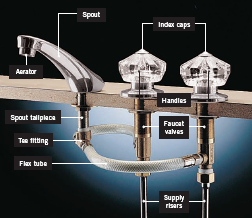Chiller System Design and Control Hand book
Contents
- Primary System Components
- Application Considerations
- System Design Options
- System Configurations
- Chilled-Water System Variations
- System Issues and Challenges
- System Controls
Chiller
There are a variety of water chiller types. Most commonly, they are absorption, centrifugal, helical rotary, and scroll. Some reciprocating chillers are also available. Chillers can be either air- or water-cooled. Major vapor- compression chiller components include an evaporator, compressor(s), condenser, and expansion device(s) (Figure 1). This manual discusses the chiller’s evaporator and condenser and their relationship to the chilled-water system.
Water-cooled chillers are typically installed indoors; air-cooled chillers are typically installed outdoors—either on the roof or next to the building. In cold climates, air-cooled chillers may have a remote evaporator inside the building for freeze protection.
Chiller evaporator
The evaporator section of a water chiller is a shell-and-tube, refrigerant-to- water heat exchanger. Depending on the chiller’s design, either the refrigerant or the water is contained within the tubes.
In a flooded shell-and-tube evaporator (Figure 2), cool, liquid refrigerant at low pressure enters the distribution system inside the shell and moves uniformly over the tubes, absorbing heat from warmer water that flows through the tubes.
In a direct-expansion (DX) shell-and-tube evaporator (Figure 3), warmer
water fills the shell while the cool, lower-pressure liquid refrigerant flows
through the tubes.








0 Comments